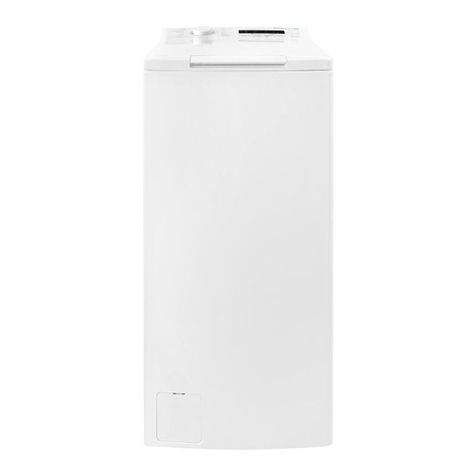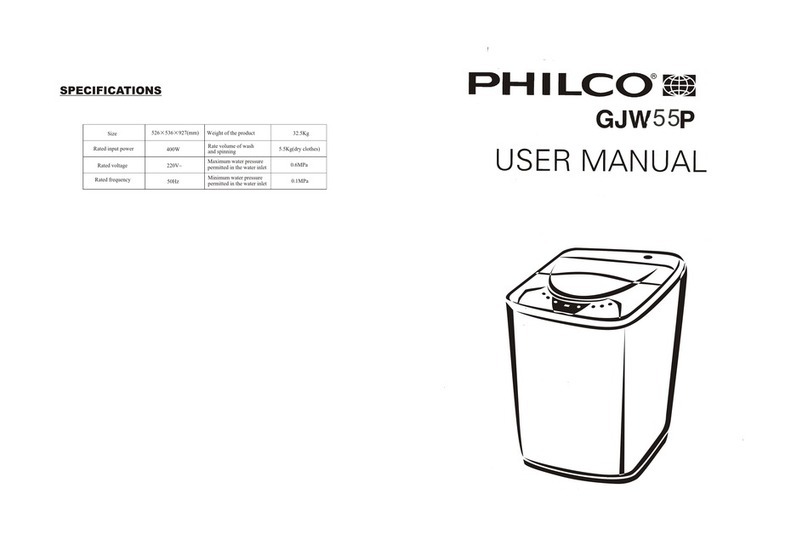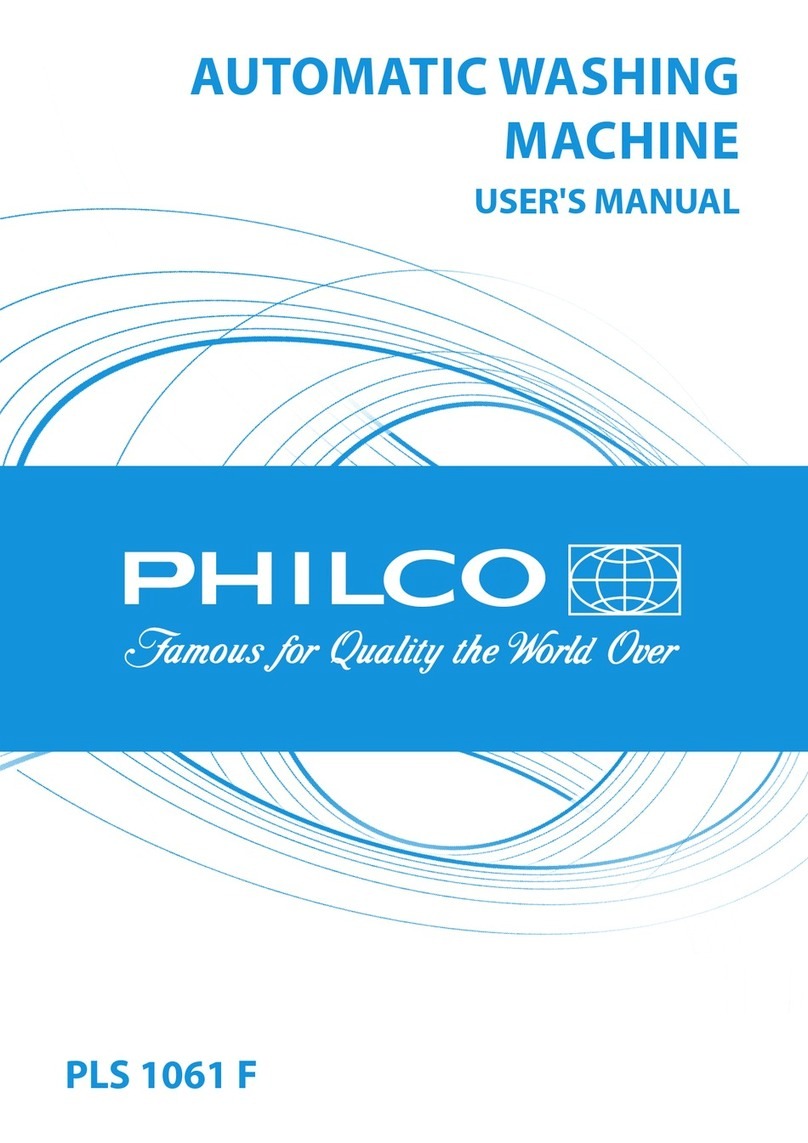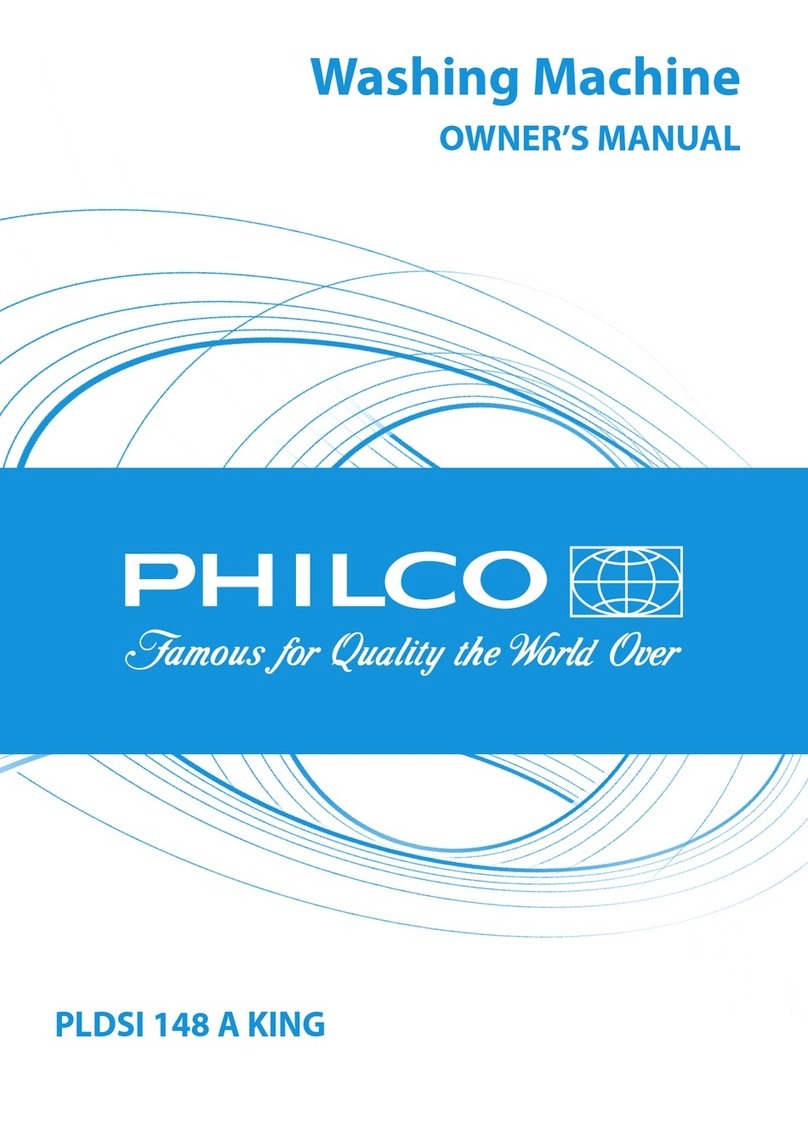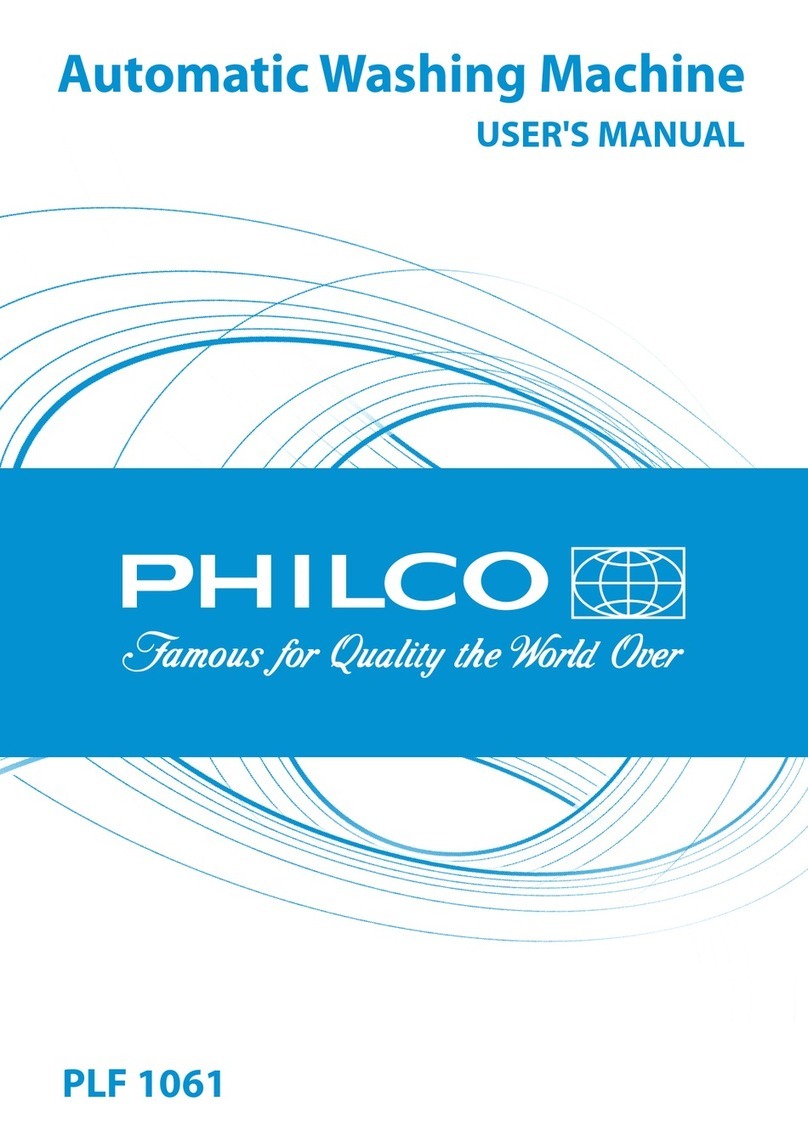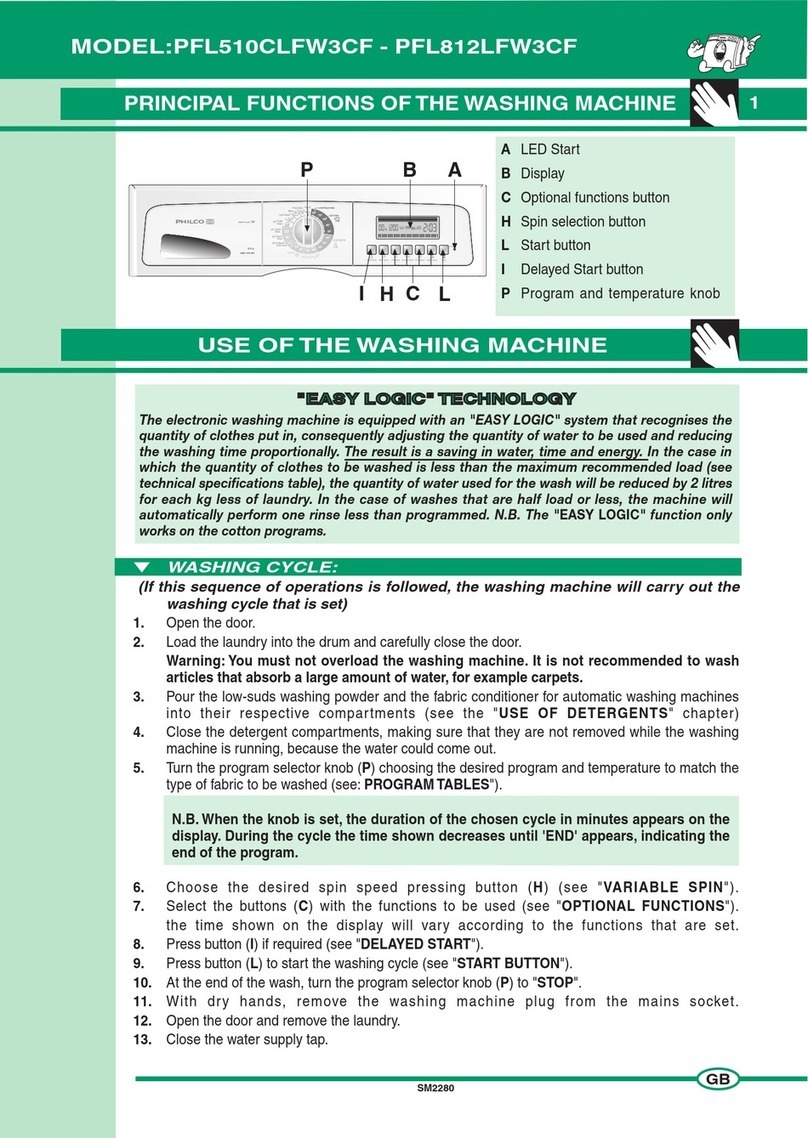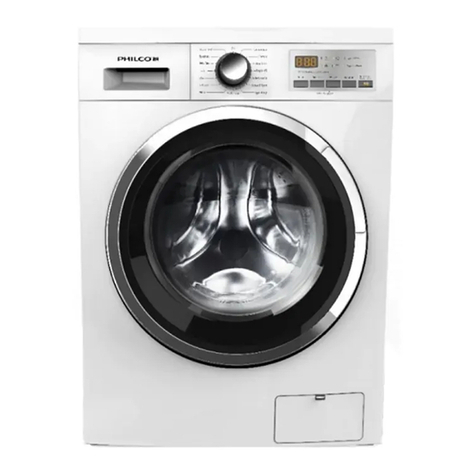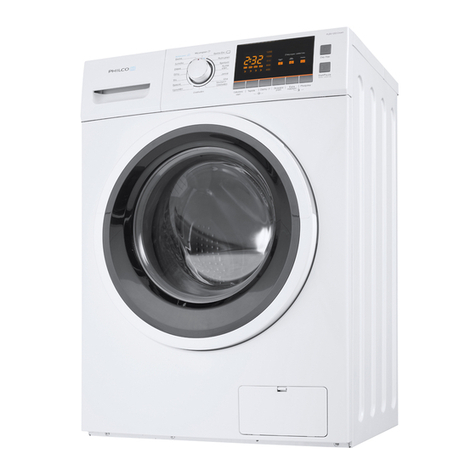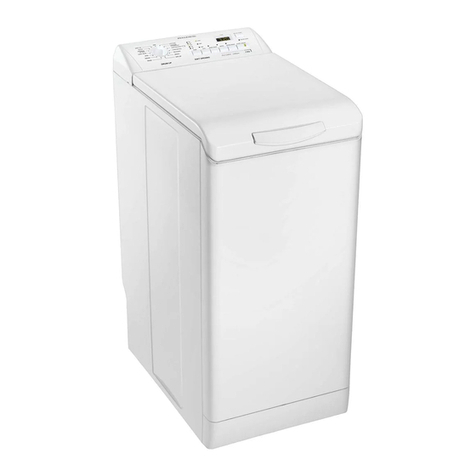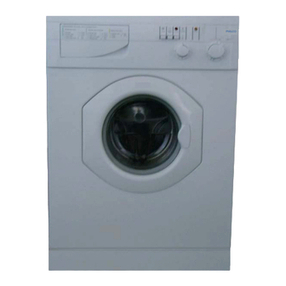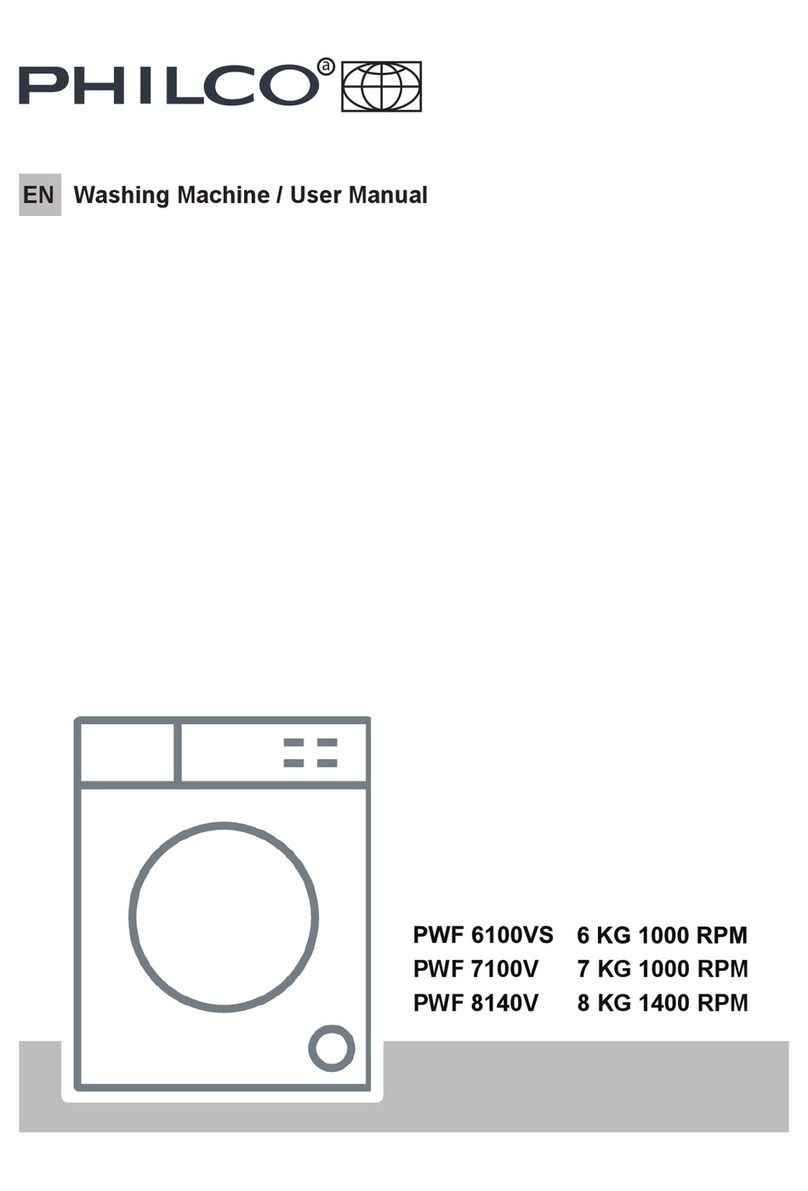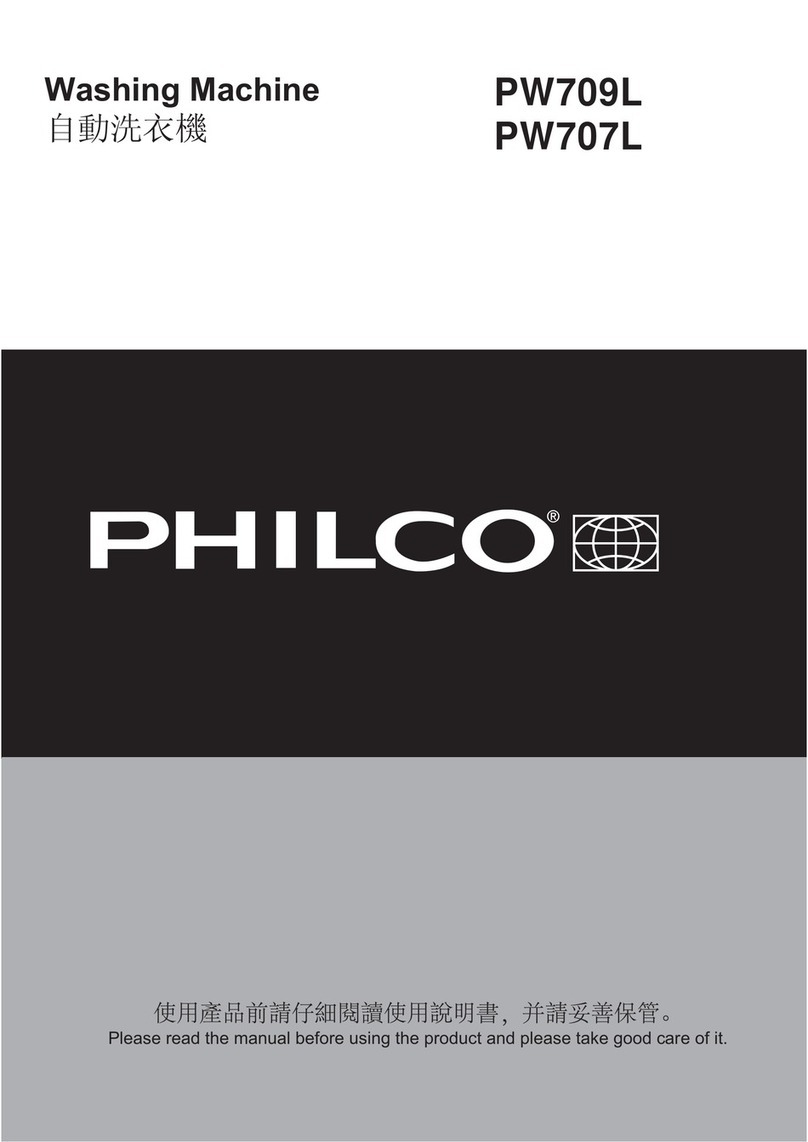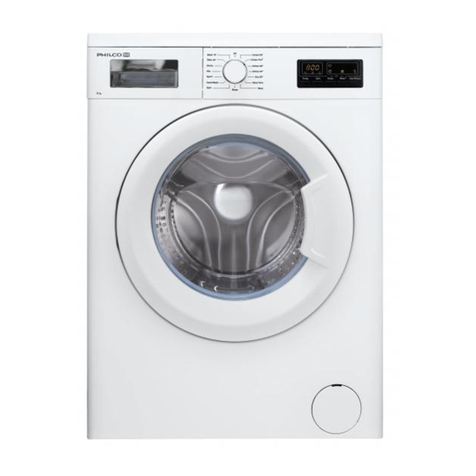dd
ddee
eett
ttee
eerr
rrgg
ggee
eenn
nntt
tt
aa
aann
nndd
dd
ss
ssoo
ooff
fftt
ttee
eenn
nnee
eerr
rrss
ss
11
1111
11
•Howtochoosethedetergent
Use only detergents suitable for machine washing.
You can find:
•washing powders for all types of soil and fabrics
•washing liquid, more suitable for low temperature pro-
grammes without pre-wash (max. 60°;)
•delicate detergents for certain garments, such as drip/dry
clothes (up to 60°C) and wool.
On the detergent packaging you will find the indication of the
main components, i.e. bleaches, enzymes, etc. Choose the
detergent according to the type of laundry and soil.
Do not pour into the machine bleaching products con-
taining chlorine: they could damage the synthetic mate-
rial and the rubber parts of the machine.
CB
A
Hardness
level
1 soft 0 - 7°0 - 12°
7 - 14°12 - 25°
14 - 21°25 - 37°
over 21°over 37°
2 medium
3 hard
4 very hard
Water
characteristics dH fH
Ask the water supply Company for the hardness level of the water in your area
Water hardness
•Amountofdetergent
•dispenser Afor the pre-wash detergent
•dispenser Bfor the main wash detergent
•dispenser Cfor liquid softeners
The total amount of detergent to be used for the pre-wash
and main wash is shown on the detergent packaging, based
on the hardness level.
The amount of detergent depends on:
–water hardness
–type of fabric
–degree of soil of the laundry
•Amountofliquiddetergent
Liquid detergents have to be used, according to
manufacturers’directions, only with temperatures
up to 60°C. When using liquid detergents, it is nor-
mally possible to avoid the pre-wash; therefore the
manufacturers’directions on the amount of deter-
gent to use are normally referred to the main wash
only.
•Howtoaddsofteners
Softeners make the laundry softer and reduce the
static in synthetic fibres. Softeners can be used, for
example, for sponge-clothes, knitwear, curtains,
etc.
•Pour the softener in dispenser C, according to
manufacturer’s directions.
The softener will automatically get into the machine
during the last rinse. At the end of the washing pro-
gramme, a left over of water remains in dispenser
C. This is used to dilute softeners which may be
too thick or concentrated. If more water than normal
remains in dispenser C, this means that the emp-
tying device is blocked interrupting the suction ef-
fect of the device. Cleaning instructions are give on
page 17.
Never pour in the dispenser softeners and starch
together, as this could block the overflow system.
